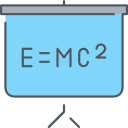
Skripsi
APLIKASI BIOCHAR KULIT BUAH PINANG SEBAGAI ADSORBEN ZAT WARNA KATIONIK MALACHITE GREEN DAN ZAT WARNA ANIONIK REACTIVE BLUE
Penilaian
0,0
dari 5Textile industry wastewater poses a significant threat to aquatic ecosystems and human health due to its toxic, mutagenic, and carcinogenic properties. The use of biochar derived from areca nut husks as an adsorbent shows potential in removing contamination of cationic dye Malachite Green and anionic dye Reactive Blue. Biochar is produced through pyrolysis at a temperature of 500°C for 2 hours. Adsorption was conducted by varying contact time and dye concentration. Characterization of areca nut husk biochar using XRD indicated an amorphous structure with a 2θ peak at 23° and a crystal plane (002). Functional groups of biochar analyzed by FTIR revealed the presence of aromatic, hydroxyl, and ether groups. SEM-EDX analysis showed a porous surface of the biochar with a carbon mass composition of 33.14%, oxygen 46.07%, and silica 20.35%. BET analysis indicated a biochar surface area of 29.52 m²/g, a pore volume of 0.13 cc/g, and a pore size of 15.46 Å. The adsorption capacity of areca nut husk biochar for Malachite Green and Reactive Blue at equilibrium was 13.447 mg/g and 15.366 mg/g, respectively, while the adsorption capacity of areca nut husk powder for Malachite Green and Reactive Blue at equilibrium was 15.183 mg/g and 10.000 mg/g, respectively. The kinetic model for the adsorption of areca nut husk biochar on Malachite Green follows a pseudo-second-order kinetic model, whereas the kinetic model for the adsorption of the adsorbent on Reactive Blue follows a pseudo-first-order kinetic model. The adsorption isotherm model of areca nut husk biochar on Reactive Blue based on the Freundlich isotherm indicates physisorption.
Availability
| Inventory Code | Barcode | Call Number | Location | Status |
|---|---|---|---|---|
| 2507001689 | T169402 | T1694022025 | Central Library (Reference) | Available but not for loan - Not for Loan |
Detail Information
- Series Title
-
-
- Call Number
-
T1694022025
- Publisher
- Indralaya : Prodi Ilmu Kimia, Fakultas Matematika dan Ilmu Pengetahuan Alam Universitas Sriwijaya., 2025
- Collation
-
xix, 101 hlm.; ilus.; tab.; 29 cm.
- Language
-
Indonesia
- ISBN/ISSN
-
-
- Classification
-
535.607
- Content Type
-
Text
- Media Type
-
-
- Carrier Type
-
-
- Edition
-
-
- Subject(s)
- Specific Detail Info
-
-
- Statement of Responsibility
-
MI
Other version/related
No other version available
File Attachment
Comments
You must be logged in to post a comment
 Computer Science, Information & General Works
Computer Science, Information & General Works  Philosophy & Psychology
Philosophy & Psychology  Religion
Religion  Social Sciences
Social Sciences  Language
Language  Pure Science
Pure Science  Applied Sciences
Applied Sciences  Art & Recreation
Art & Recreation  Literature
Literature  History & Geography
History & Geography